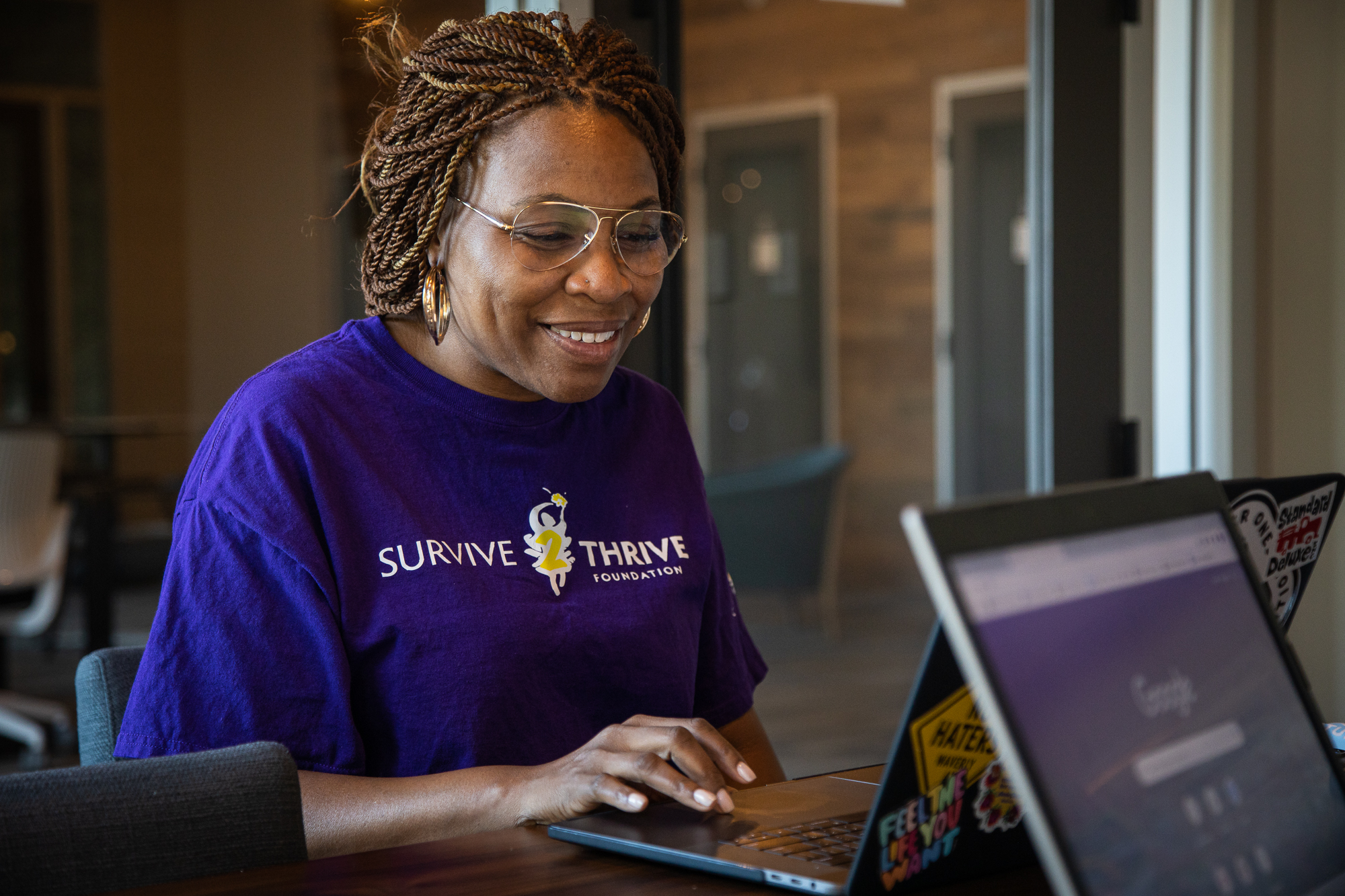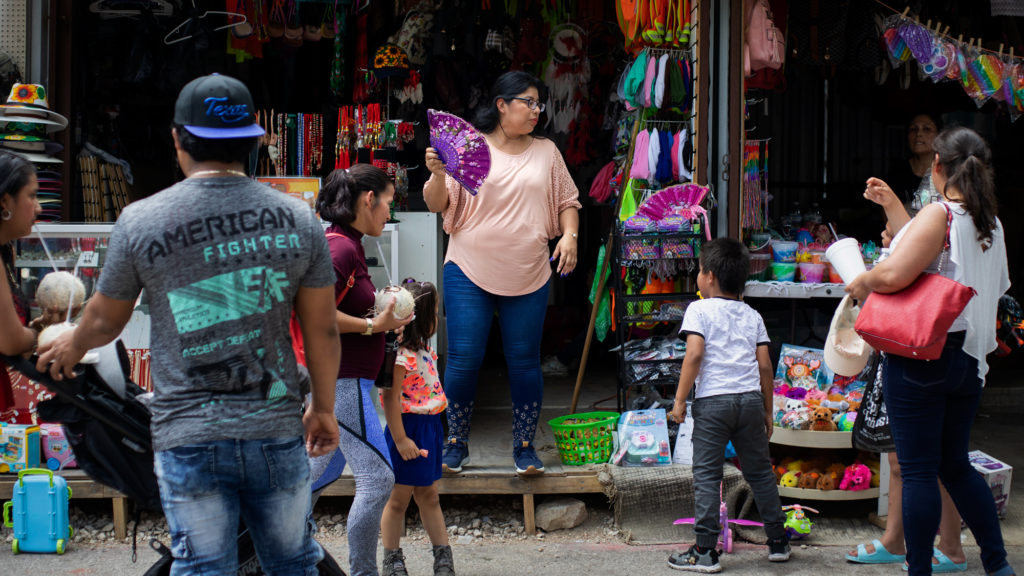Twenty years ago, Courtney Santana and her two children escaped the domestic violence and abuse in their home, moved into a shelter for three months, and began a new life away from the man who threatened them with a gun.
“Once I was able to get on my feet, I thought, ‘I can’t just leave this experience without doing something to help other survivors like myself,’” Santana said. “So I started finding ways to serve the community.”
Over the years, her service has taken the form of public speaking, advocacy, serving on nonprofit boards, writing books, and founding her own nonprofit in 2006.
Since then, Survive 2 Thrive Foundation has formed partnerships with local law enforcement and other domestic violence groups to provide lodging, food, clothing, and case management for clients seeking a life free from their abusers.
One of their newest programs, called Sanctuary, provides short-term lodging in local hotels, as well as other resources for displaced victims. The accommodations are fully paid for by Survive 2 Thrive and available by the time a client arrives at the hotel. Soon after that, counselors contact the client to address emotional, psychological, and safety needs.
“We try to catch them right when the incident happens, and then provide the case management, hotel space, and resources, like food and clothing, and try to get them into semi-permanent or permanent housing within 30 days,” Santana said.
Through a partnership with the Austin Hotel and Lodging Association, the foundation is guaranteed a significantly reduced rate on about 1,600 rooms in 13 hotels across the city.
“It’s invaluable,” Austin Police Department Victim Services Supervisor Stephanie Rohe said of the program. “It keeps people from possibly returning to their abuser, and from possibly becoming homeless.”
To help streamline the process, Santana and her husband of six years, Gary, recently developed a technology tool to aid victims in their critical moment of crisis. They say their new web platform and mobile app, also called Sanctuary, can help first-responders and case workers access hotel rooms for victims even more quickly and easily – shortening what normally takes about an hour down to 10 or 15 minutes.
“These are women and men that are on the fringes. If we could just catch them before they fall all the way, we can rebuild a significant part of the community, and that proper handling of them initially is really important,” Santana said. “If that doesn’t happen, then they will become systematically disenfranchised. They lose their home, they lose their job. It’s just this catastrophic loss. So we feel like this is us catching them with a safety net of resources and being able to work with the police so it’s not a scary process.”
Courtney Santana meets with members of the Survive 2 Thrive team at a co-working space in Austin, Texas. “There are some really great success stories of people who have been in our programs that are now survivors and they’re living amazing lives,” she said. “We didn’t save them. We just showed them the steps, and they took it from there.” [Photo by Jim Tuttle]
Survive 2 Thrive is now in talks with APD to finalize plans for a pilot program that would test the platform within the department. Her hope is that officers responding to domestic violence calls will be able to search for nearby lodging in real time and reserve a room with a few simple clicks.
The specific details for the pilot program are likely to hinge on new discussions among city officials about possibly decoupling the Victim Services Unit from APD, an issue raised by recent decisions to reduce and reallocate millions of dollars from APD’s budget.
Whether the app first finds its way into the hands of counselors or patrol officers, Rohe said the potential for the technology is exciting – and timely.
“Displacement is always a big concern with people leaving an abusive relationship, and with the pandemic, that’s been a heightened concern,” Rohe said. “We have victims of crime who often need shelter, so any service that can come in and help fill that gap is highly needed.”
And a number of reports have suggested the need has only grown during the pandemic. The National Domestic Violence Hotline published a report in June, citing a nine percent increase in contacts from people seeking help. Roughly 10 percent of everyone contacting the hotline said the pandemic was playing a role in their abuse situation.
In Austin, the frequency of domestic violence calls has fluctuated since the pandemic began in March, Rohe said. Early on, the call volume was comparable to previous years, then came a brief rise, and now the numbers seem back in line with expected trends. However, Rohe was quick to point out that call volume may not accurately reflect how much domestic violence is actually taking place.
Rohe said counselors have noticed an apparent increase in the severity of injuries being reported in domestic violence cases, as well as a rise in cases of harassment, stalking, and restraining order violations. She added that loss of wages and other economic stresses brought on by the pandemic are probably an aggravating factor.
“The longer we shelter in place, the worse it gets for victims of domestic violence who may have used work as an outlet for them to get help,” Santana said. “There’s also this weird fear that they have to choose between their violence and the virus because the shelter is an unknown environment, and then there’s the fear that they’re going to be homeless.”
The Santanas believe the Sanctuary program and app can play a crucial role in alleviating those fears by providing private hotel rooms as alternatives to shelter beds, which are now even more scarce due to the pandemic. But even before the pandemic, space was in high demand, which is why domestic violence shelters use a danger assessment for new clients to determine how likely it is that the victim may be killed by their intimate partner. While this test is meant to reserve limited beds for the most vulnerable victims, it can sometimes prevent others from accessing safety right away.
Survive 2 Thrive doesn’t require such an assessment — and doesn’t need to — because utilizing hotels, even during the pandemic, provides more options and more capacity, which has declined during the pandemic while the need appears to be going up.
“The local shelters are at half capacity because of social distancing parameters. They can’t take as many clients as they used to, and there was already a capacity issue,” Santana said. “Last year, nationally, nearly 58 percent of those who went to the battered shelter would be turned away. Since COVID in Texas, we’re looking at about 90 percent [being turned away].”
In an effort to address that growing need, the City of Austin granted $800,000 to Survive 2 Thrive Foundation in April to cover costs for the resources provided to those seeking safety. This came from a $15 million allocation to local nonprofits as part of the city’s Relief in a State of Emergency (RISE) program to support COVID-19 emergency relief for residents.
As word of the available resource spreads, Survive 2 Thrive has seen an uptick in calls requesting assistance, Santana said. Since March, the organization has served more than 360 people comprising 161 families and placed 47 of them into permanent housing.
“Now that the public knows that we’re here and that they don’t have to choose to go to a shelter where they don’t know the environment, [and they know] they can be self-sufficient and on their own, and they don’t have to potentially have infection risk, they’ve been very, very receptive,” Santana said.
With the Sanctuary app pilot program on track to begin soon in Austin, Santana has been working to set up similar programs in greater Los Angeles and Denver.
“We’d like for this to eventually be a national platform. The infrastructure is there. Every city has a police department, every city has hotels, and most cities have shelters,” Santana said. “It’s a really great opportunity to create a safety net for survivors.”




